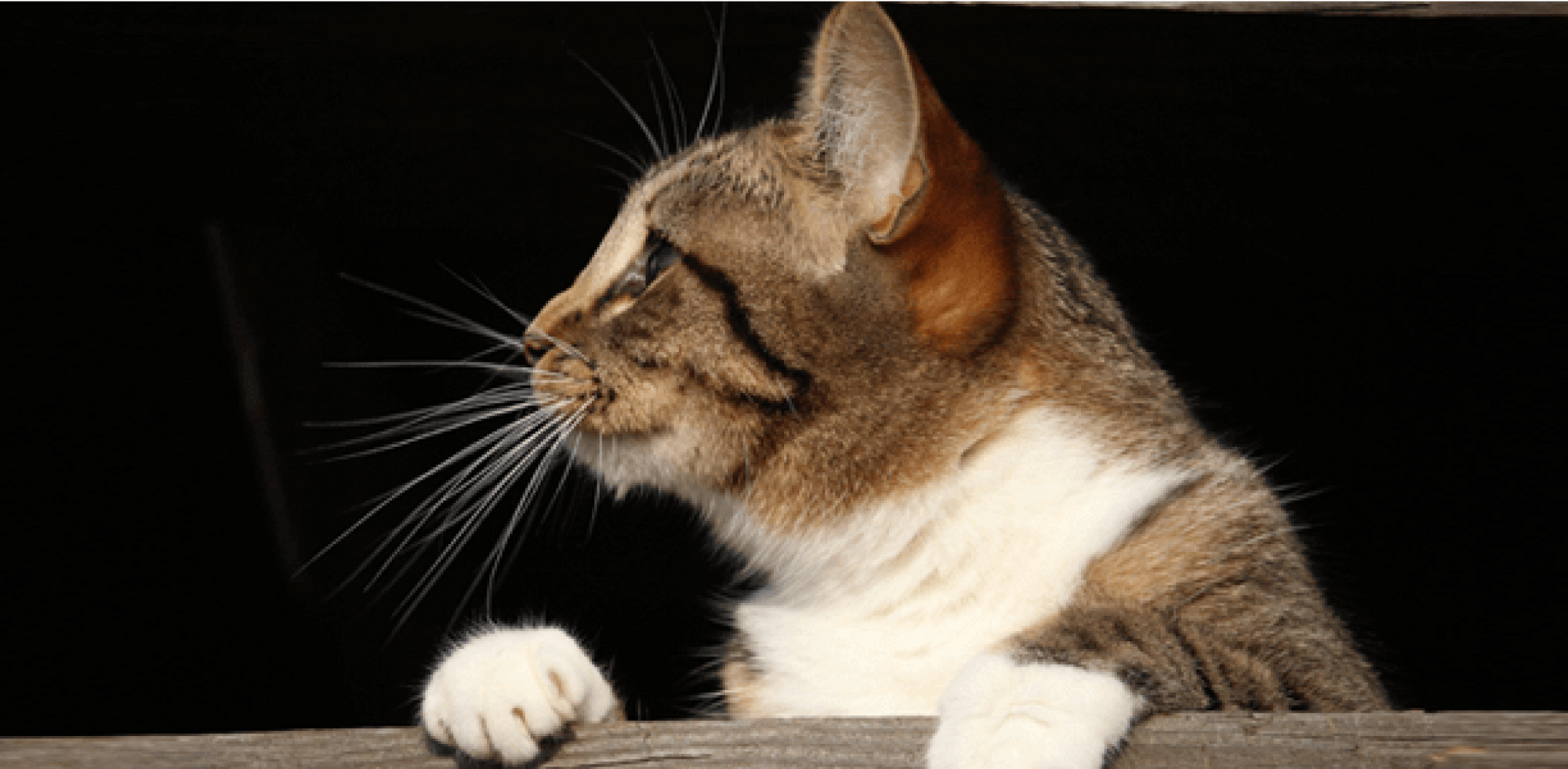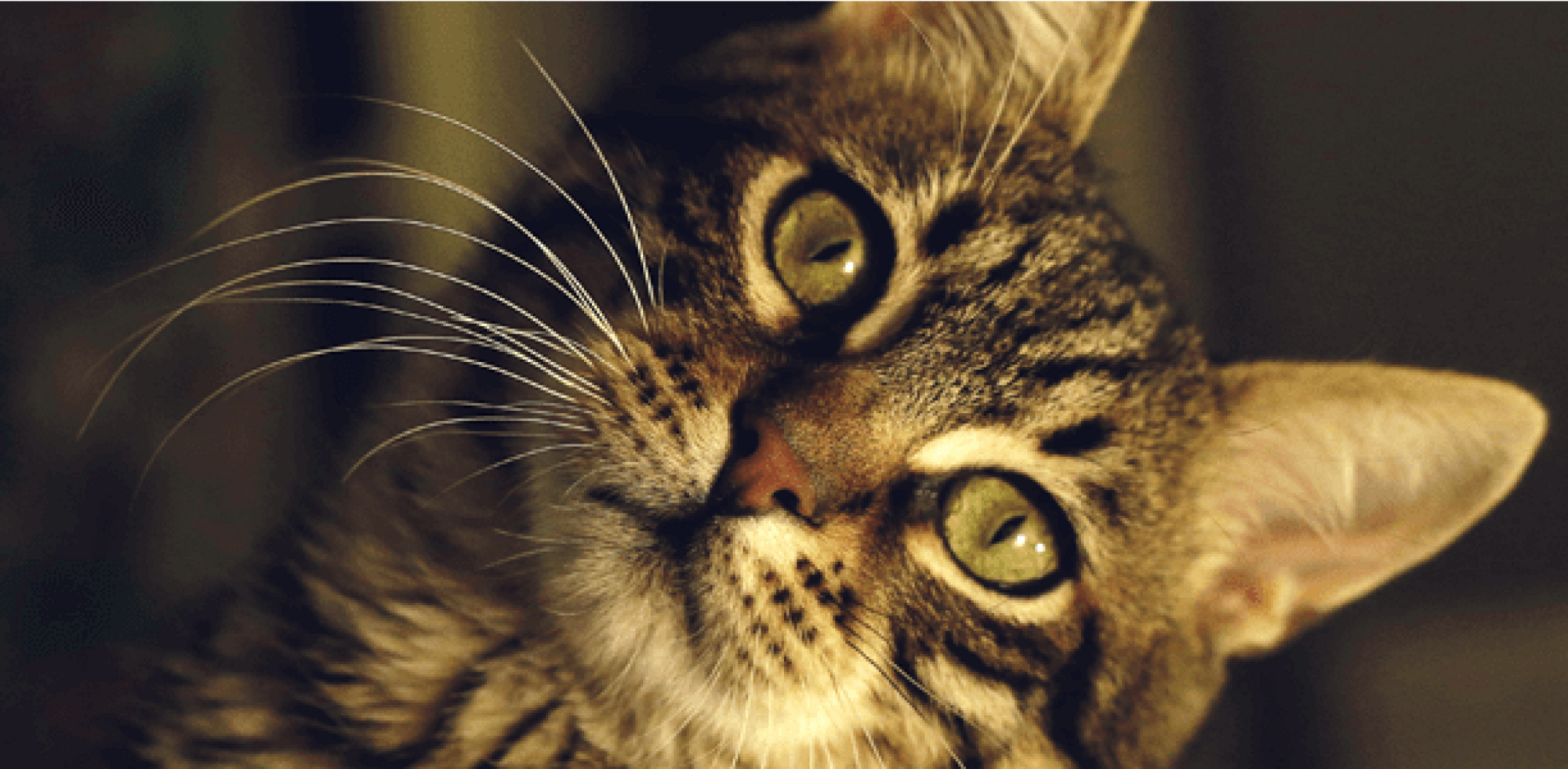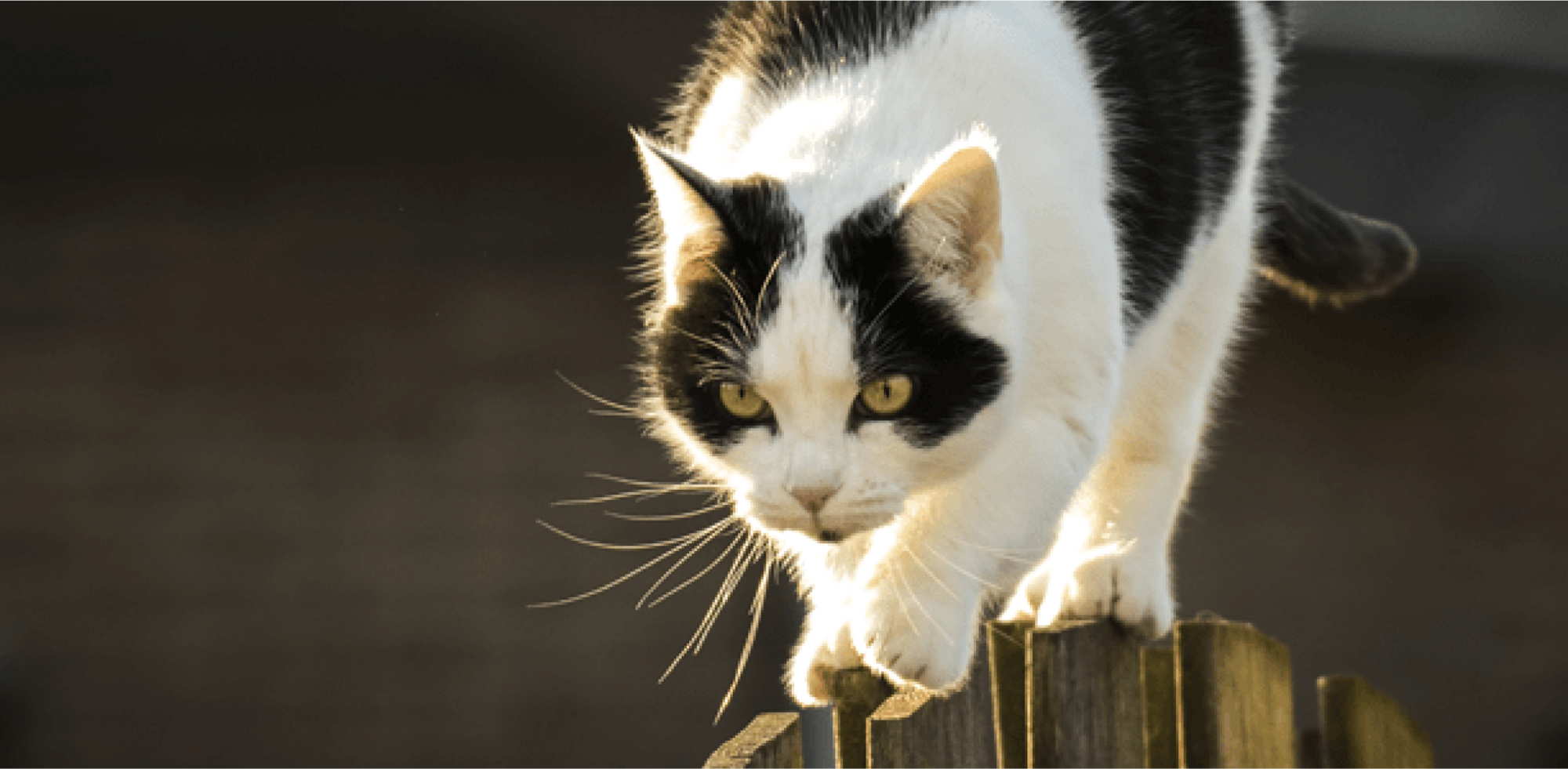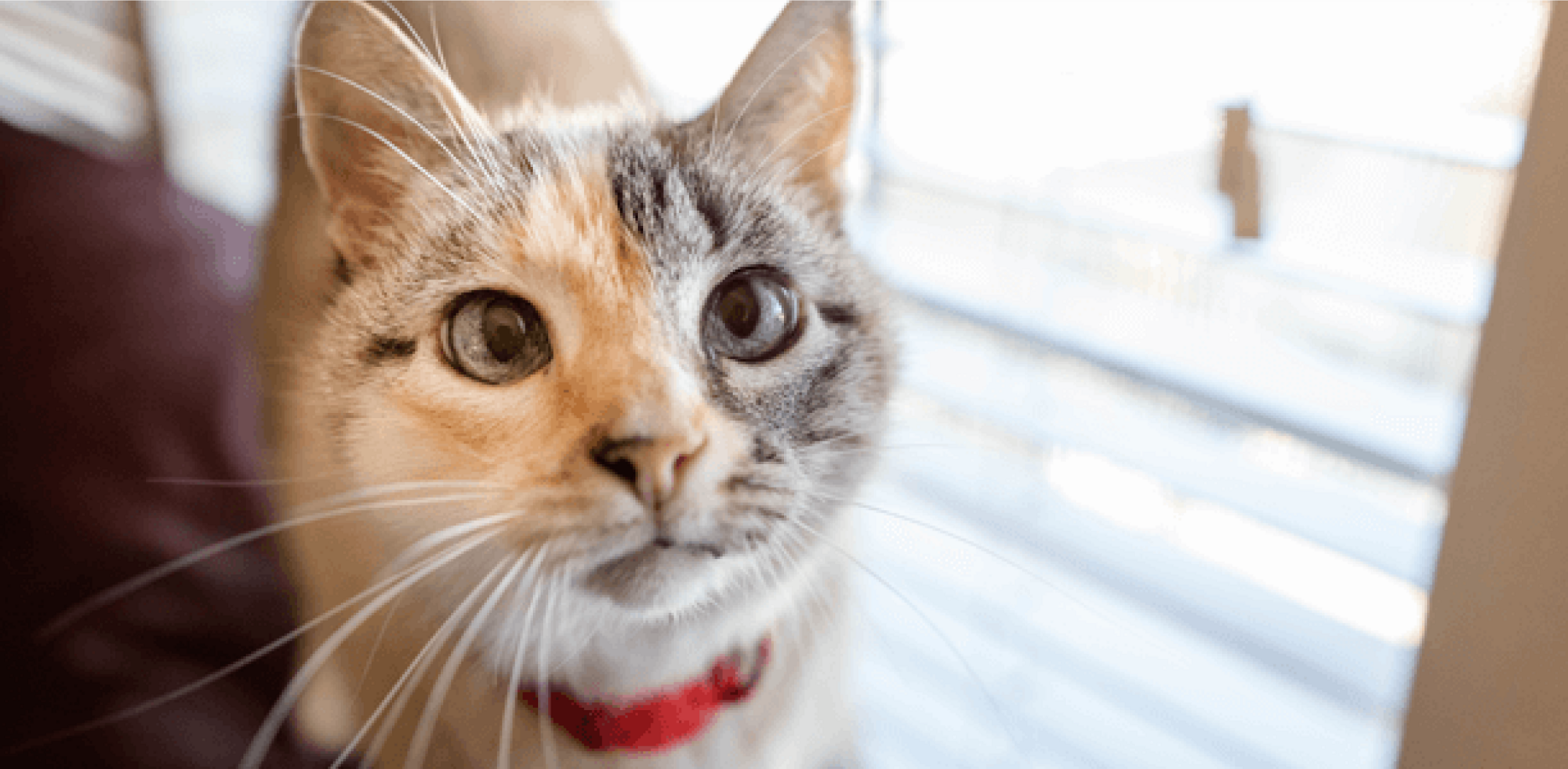Last Updated: 06/05/2025
What Do Cat Whiskers Do
Have you ever wondered what cat whiskers are for? Read more about their function and why they are so important to cats for health and wellbeing.
Author: Dr Carla Paszkowski BVSc (Hons)
Reading Time: 17 minutes - medium read
No, they're not just for tickling us on the cheek while we sleep. And no, they're not just for making your cat look adorable, sleek and divine. Your cat's whiskers actually serve a very important purpose in order for your cat to function.
Not just hairs

Also known as vibrissae, whiskers are very different to regular hairs. They are rooted much deeper in the dermis, and their follicles contain a rich network of tiny nerves. They are much thicker and stiffer than regular hairs, and grow only in certain anatomical locations.
Whiskers grow in four rows on the upper facial lips, and above each eye like eyebrows. They also grow on the jawline and on the back of their front legs.
Thanks to intricate micro-muscles, your cat can move their whiskers. A cat may flatten their whiskers against their body and face as a means of protecting the whiskers when preparing to fight or fleeing a scary situation. They may also point their whiskers forward and flare them out when hunting or playing with toys, as a means of detecting every possible movement of their prey.
Kitty Radar

Cat whiskers actually help your cat navigate by sensing intricate information about their surroundings. Not only can your cat move their whiskers to physically touch objects, but your cat can also sense changes in air currents due to the fine-tuned neurological system in each whisker.
Whiskers help your cat navigate in the dark. A cat using their whiskers in the dark is like a human putting their hands in front of them while walking through a dark hallway.
Whiskers can also help your cat determine whether they will fit through an opening or into a small space. When your cat investigates an opening with their head, they're not just peering inside - they are also feeling with their whiskers to see if they'll fit. This works because typically, the width of your cat's whiskers correlates to the width of their body (so if the whiskers fit, your cat's body will too). However, if the cat is overweight, this width rule won't apply.
As you can imagine, due to the incredible ability of the whiskers to gauge the environment, blind cats will almost exclusively rely on their whiskers to get around. They are in fact so effective, that blind cats actually do quite well without their sight!
A vital tool for hunting

By detecting small air currents, your cat's hunting ability is hugely dependent on their whiskers. They can detect the small movements of prey animals through tiny currents in the air and small vibrations on the ground.
The whiskers on the back of the front legs also help your cat detect a prey's movements and body position once caught, which allows them to optimise a 'kill' bite. This is important due to the cat's poorer close-range eyesight.
A balancing act

Ever wondered how your cat seems to be able to pull off any acrobatic balancing feat? The whiskers play a large part in this too. By containing special nerves responsible for proprioception, whiskers help your cat balance and move quickly along narrow surfaces such as tree branches or fences.
Studies showed that cats without whiskers can actually struggle to determine distances properly, and can run into things. This indicates that cats can judge distances and depth perception with the help of their whiskers.
The whiskers on the legs also help your cat climb trees, by giving them acute awareness of surfaces and any bends in direction.
Whiskers should NEVER be cut!

Don't ever cut your cat's whiskers, and certainly don't even think about plucking them! Not only are these acts extremely cruel due to your cat's need for their whiskers, but due to the intricate neurological network, plucking your cat's whiskers can be extremely painful.
If a cat's whiskers are cut, they feel disoriented and frightened, and will often hide and cower. This could be compared to blindfolding a human, due to the loss of a vital sensory input.
Whiskers don't need grooming or trimming in any way. They will naturally shed and grow back, just like fur. This means that if you ever find a whisker around the place, don't worry! Your cat is likely just shedding their old whiskers and growing new ones.
What to do if you accidentally cut your cat's whiskers: Sometimes grooming accidents happen, or children get too excited with a pair of scissors. But don't panic - your cat's whiskers will grow back, it will just take a while (approximately 2-3 months). Yes, your cat will feel a little disoriented for a few weeks. The only thing you should do while waiting for the whiskers to grow back is ensure you keep your cat indoors at night. They will mostly be fine to go outside during the day, but as nighttime often brings fights and predators, best to keep them safely indoors.
Further Reading
Want to know more? Check out our Discover Page for more tips on keeping your pets happy and healthy.